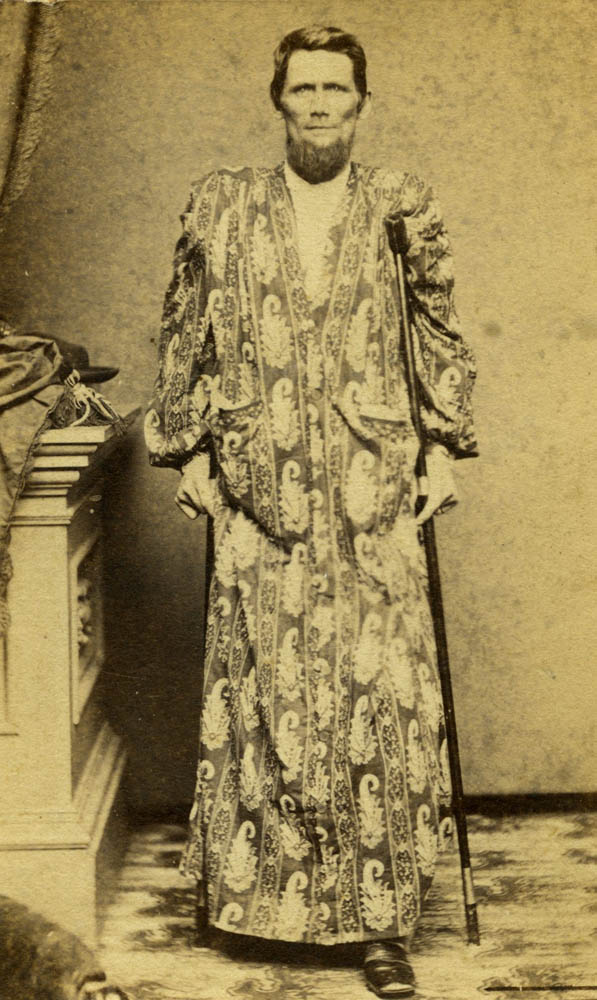Photograph of unknown amputee, wearing a robe or dressing gown and using a crutch; his right leg appears to have been amputated. The photograph has a Chicago photographer’s backmark, which likely indicates the subject is an Illinois soldier.
During the Civil War, the commonly used “Minie” bullet was a relatively slow, large caliber soft lead projectile that shattered bones. About 70% of the wounds reported during the war were to the extremities, and surgeons had limited time to work in order to save a soldier’s life. Amputation of wounded arms and legs was often the best course of action. Surprisingly, the overall mortality rate from amputations was 28%, with a higher rate for leg amputations close to the body. Blood poisoning, gangrene and secondary hemorrhaging could prove fatal even if a soldier survived the amputation. The majority of the reported 30,000 amputations performed by Union surgeons were done in field hospitals located close to the battlefield.
Carte-de-Visite by F.L. Brand, Chicago, Ill.
Image Courtesy Wilson’s Creek National Battlefield; WICR 31956




